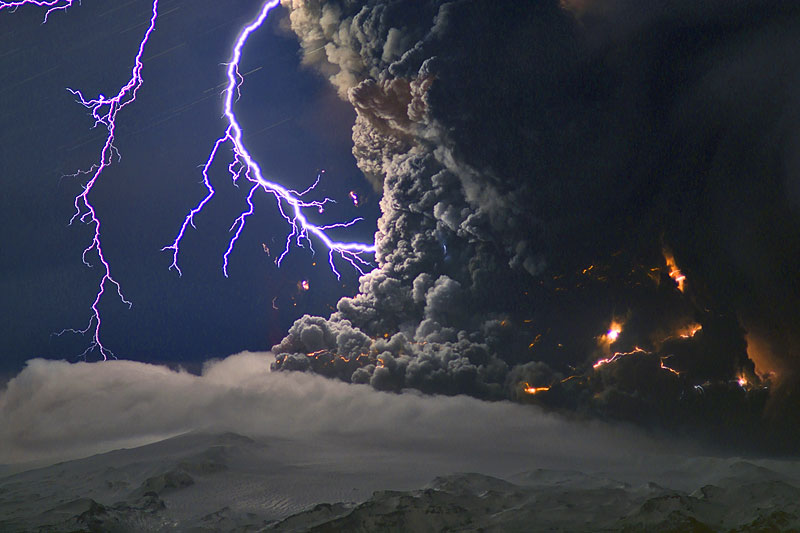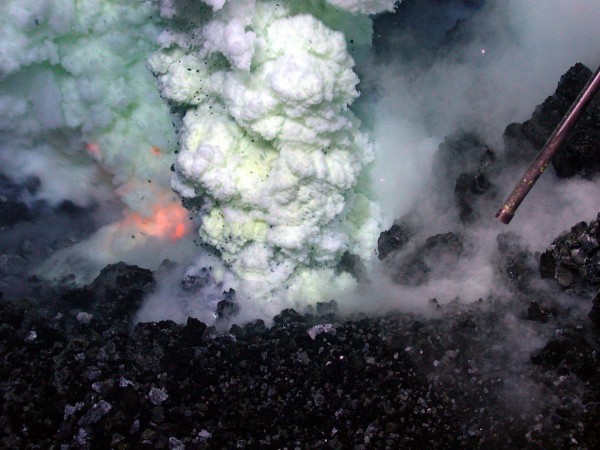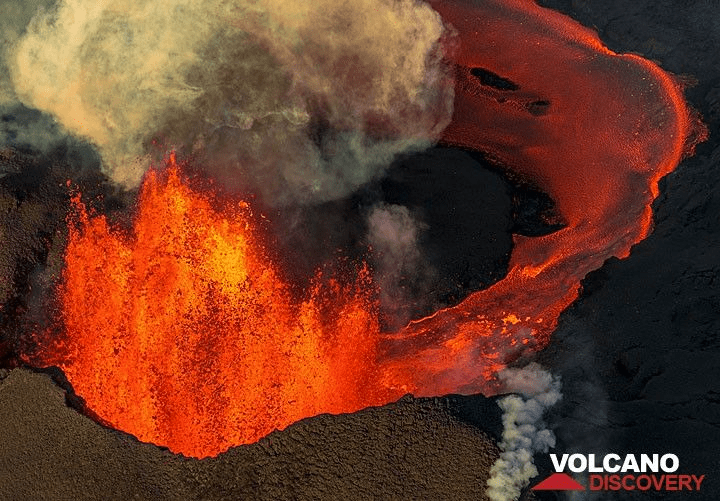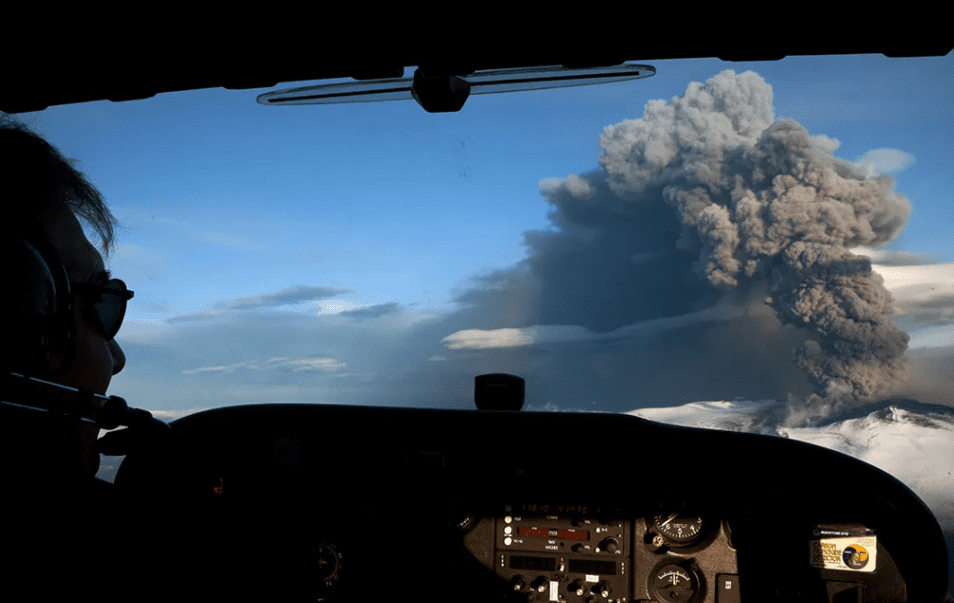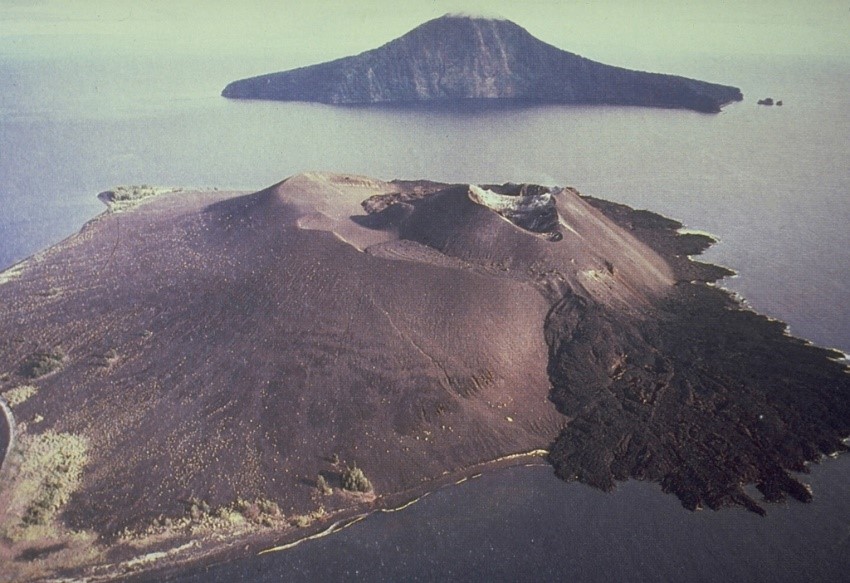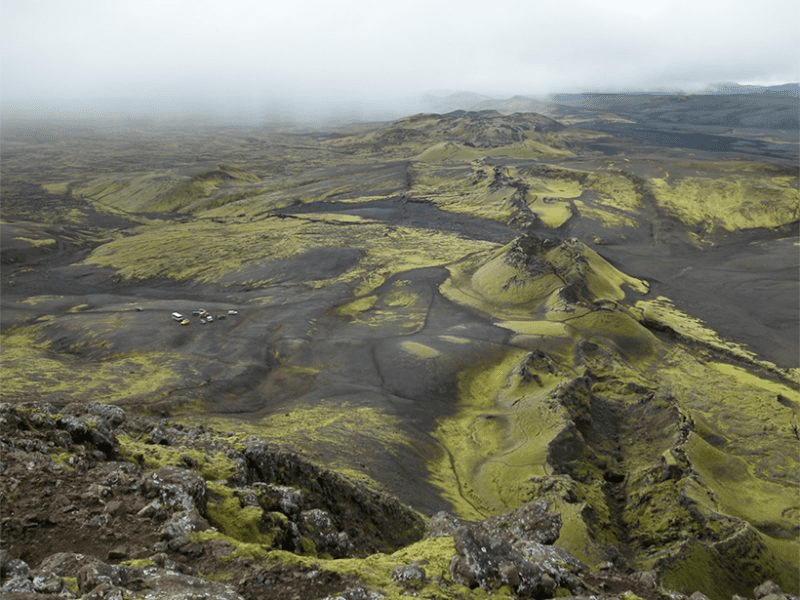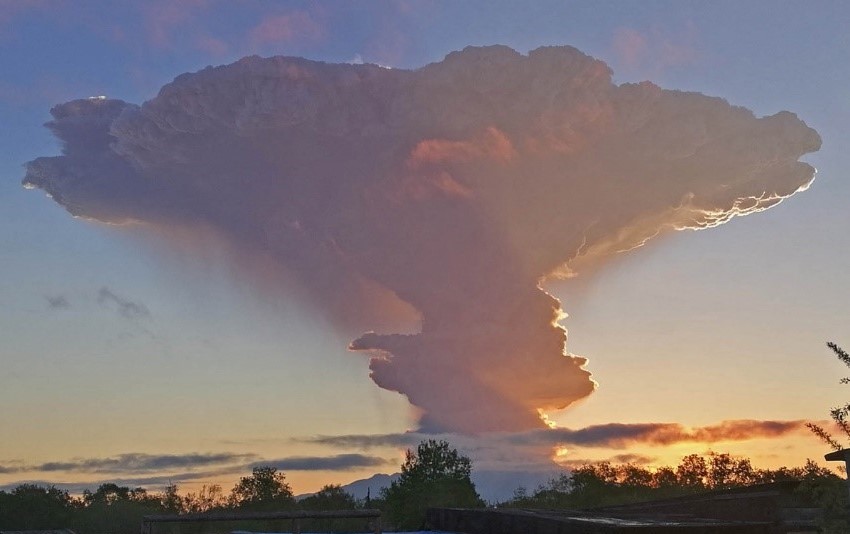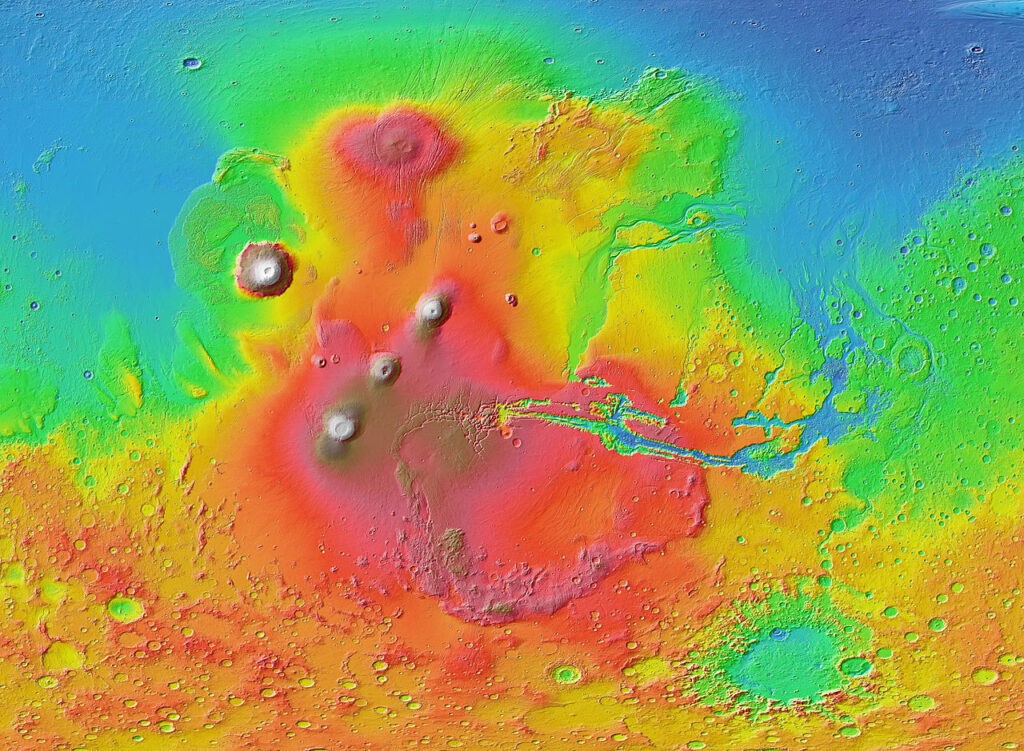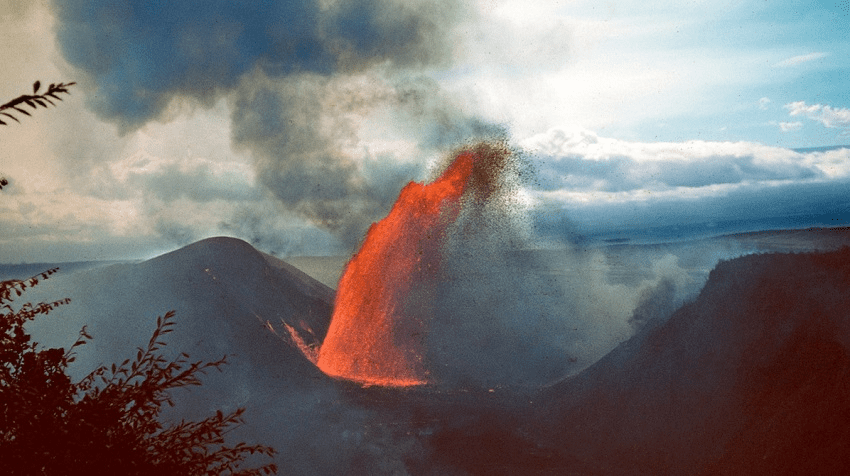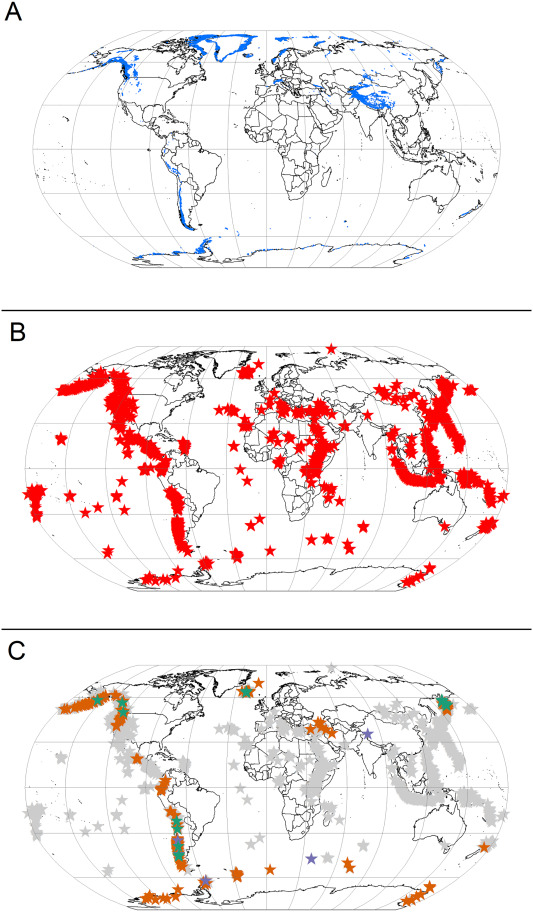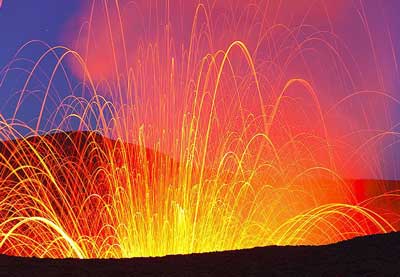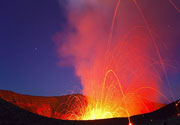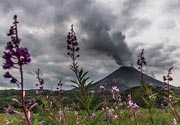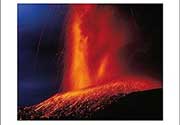Can sea level changes trigger volcanic eruptions? The case of Santorini Volcano
Mon, 23 Aug 2021, 20:05 20:05 PM | BY: ELEANOR WRIGHT

Artist's conception of the Minoan eruption of Santorini (Image: Cook and Abbott).
Santorini (formerly known as Thera in ancient times) forms part of the Cyclades Islands and is renowned for its awe-inspiring sea-filled volcanic caldera surrounded by steep cliffs and picturesque Greek villages. It was the site of a catastrophic Plinian eruption approximately 3,600 years ago which not only destroyed most of the island but also the entire Minoan Civilisation that inhabited the island and surrounding Aegean islands. This is commonly referred to as the 'Late-Bronze-Age Minoan eruption'within the literature. Many geologists believe this single volcanic event, and the associated death of the Minoan Civilisation, changed the course of ancient Mediterranean history both socially, politically and environmentally.
A recent study published earlier this month in Nature Geoscience has revealed a strong link between sea-level and the frequencies of volcanic eruptions, using Santorini as a case study. To investigate how sea-level may influence the volcano and its eruptive activity, researchers created a computer simulation of Santorini's magma chamber, which is located approximately 4 kilometres beneath the surface of the volcano. In the simulation, when the sea-level dropped at least 40 meters below the present-day level, the crust above the magma chamber splintered and, as described by study co-author Christopher Satow, “That gives an opportunity for the magma that's stored under the volcano to move up through these fractures and make its way to the surface” causing an eruption. In Volcanology terms, these 'splinters'are termed dike injections and are triggered by induced tensile stresses within the magma chamber roof, creating pathways for the magma to escape.
The computer simulation, which utilised the capabilities of numerical modelling, used data spanning 360,000 years – an extensive record of effusive and explosive eruptions from the flooded caldera volcano of Santorini combined with a high-resolution sea-level record spanning the last four glacial–interglacial cycles. According to the simulation, it should take approximately 13,000 years for those cracks (dikes) to reach the surface and awaken the volcano. Once the sea-level rises again, it should take about 11,000 years for the cracks to close, crustal stress to diminish and eruptions to cease.
Synchronizing Santorini's stratigraphy with the sea-level record using tephra layers in marine sediment cores shows that 208 out of 211 eruptions (both effusive and explosive) occurred during periods constrained by sea-level falls (below −40 m) and subsequent rises, suggesting a strong absolute sea-level control on the timing of eruptions on Santorini (Satow et al. 2021).
Studies such as this are helping to further develop our understanding of volcanic activity, eruptive mechanisms and any connections / observed trends and patterns that could help future prediction of eruptions. Considering many of the world's volcanoes are located in or in proximity to the sea (e.g. Pacific Ring of Fire), similar changes in stress caused by altering sea-levels, described in this study, could affect many other island and coastal volcanoes, thus influencing their eruptions and the hazards posed to the many millions living in their shadow.
---
Links / Sources:
Links / Sources:
- Eruptive activity of the Santorini Volcano controlled by sea-level rise and fall : Satow et al. 2021.
- Greece's Santorini volcano erupts more often when sea level drops : ScienceNews article by Temming, 2021.
Previous news
Sun, 4 Jul 2021, 19:28
Invisible lightning – a signal of an imminent eruption?
Explosive ash plumes often result in awe-inspiring displays of volcanic lightning. This occurs when silicate materials from rocks in a volcanic eruption break apart and they encounter each other in the middle of the turbulent eruption plume, or when ash particles rub together after being ejected. The ash particles exchange electrons, creating an imbalance in the positive and negative charges – to neutralise this imbalanced electrical field, a bolt of lightning zaps through the charged clusters, creating the spectacular volcanic lightning bolts we often observe during an explosive, ash-rich eruption. ... Read all
Mon, 24 May 2021, 12:26
Deep-Ocean Volcanoes – an immense energy source.
When discussing 'volcanic eruptions', those from submarine volcanoes are often overlooked, with terrestrial volcanic eruptions attracting the most attention due to their spectacular, awe-inspiring displays of vast ash dispersal and a multitude of associated hazards. Deep-ocean, submarine eruptions have been attributed to only producing slow moving lava flows. ... Read all
Show more





